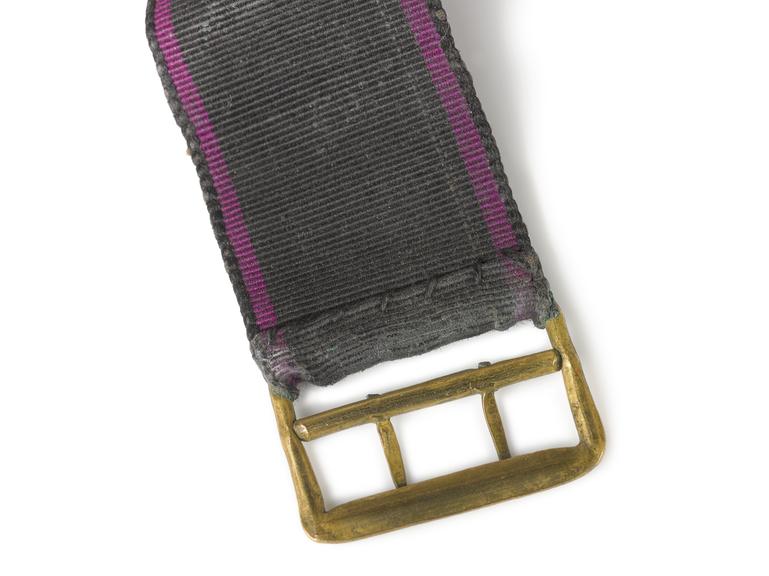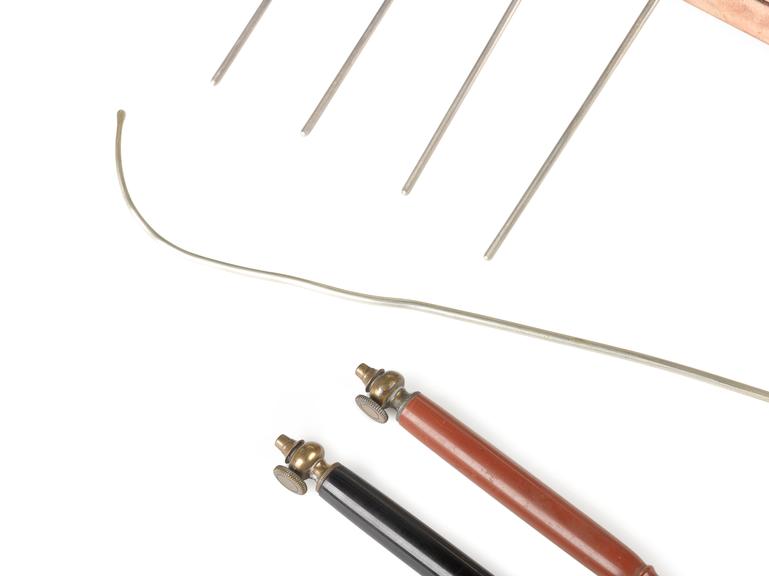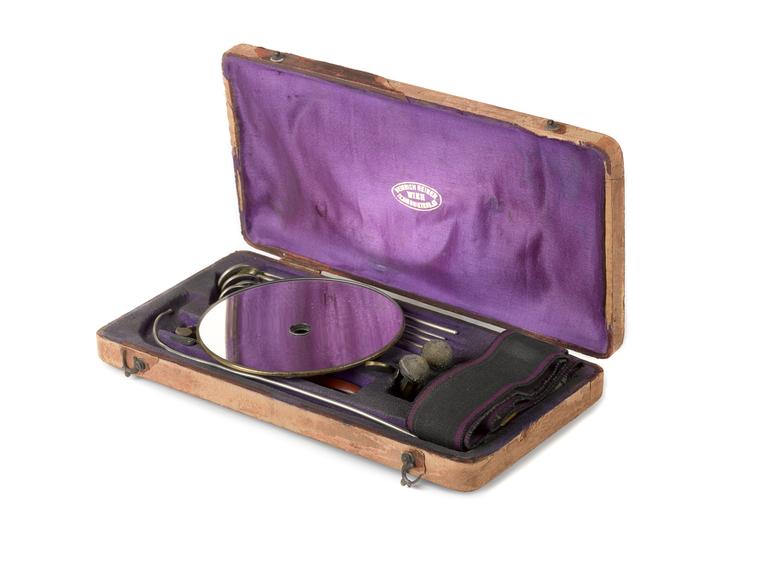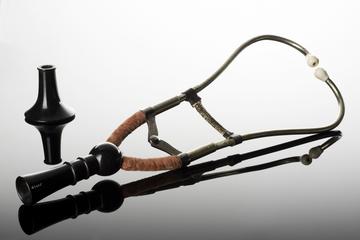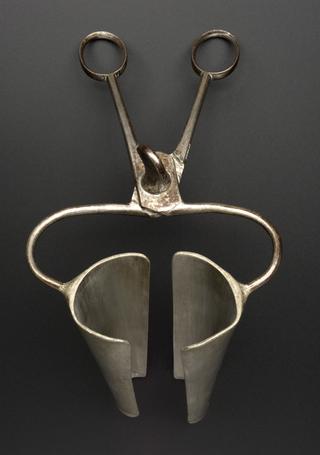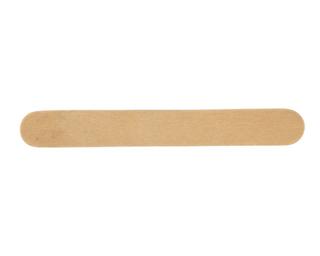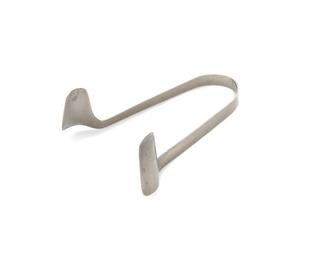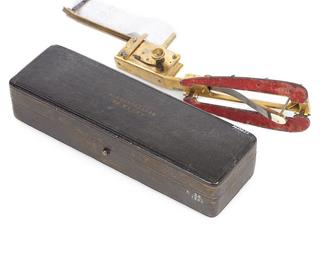Forehead lamp used by Sir Frederick Mott
Headlamp part of a laryngoscopic set, plated metal and plastic, in leather case, owned by Sir Frederick Mott, made by Heinrich Reiner, Vienna, 1875-1885
More
The reflector mirror or forehead lamp is affixed to an adjustable leather headband. The headband is an accessory that is used in conjunction with the reflector mirror. It rests on the forehead of the doctor and holds a mirror that reflects light into the mouth of the patient. This helps to illuminate the mouth so that the doctor can better inspect the larynx. Using a headband means that the reflecting mirror can be held up to the patient without the need for the doctor to hold it in their hand. The straps allow the headband to be adjusted to the size of the doctors head.
- Measurements:
-
overall: 100 mm x 190 mm x 200 mm,
- Materials:
- brass (copper, zinc alloy) and leather
- Object Number:
- A50614/1
- type:
- forehead lamp
- Image ©
- The Board of Trustees of the Science Museum






